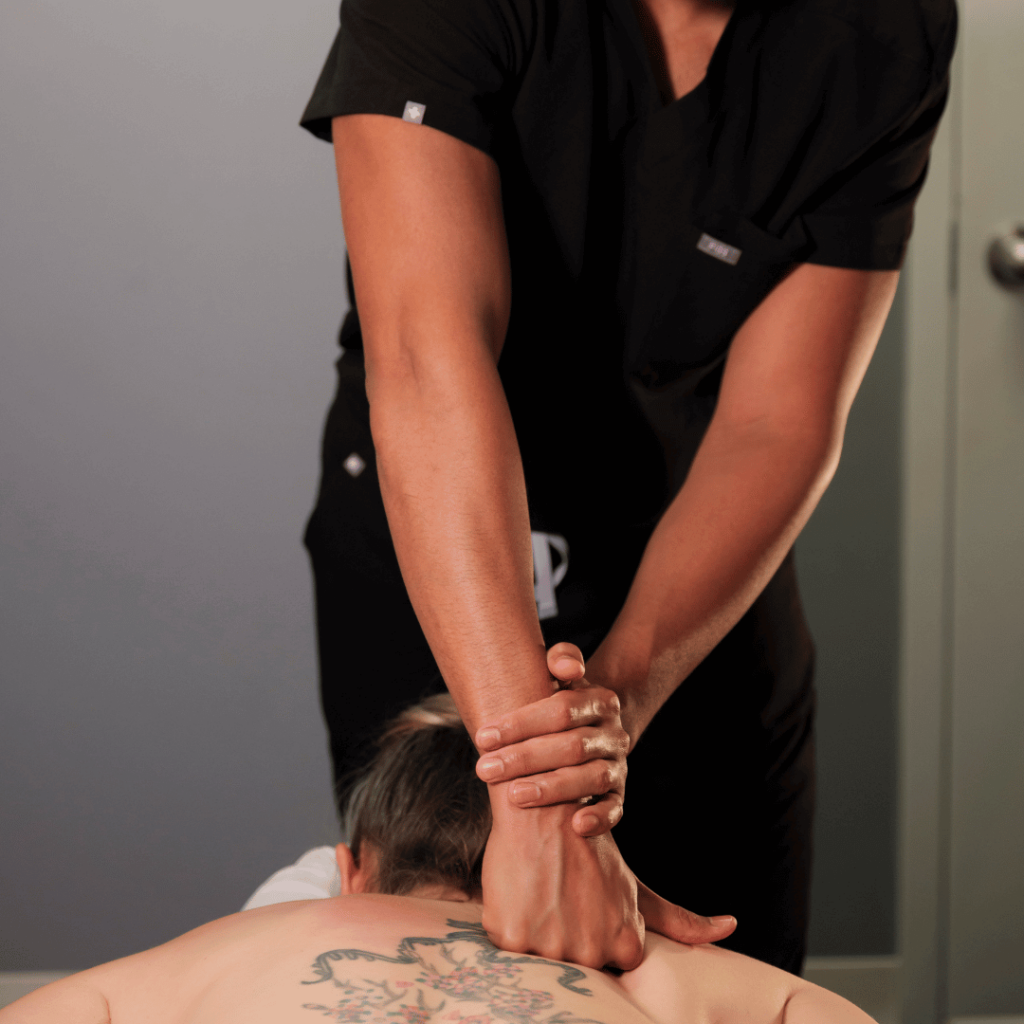What seven facts about Deep Tissue massage do you need to know?

So you booked a deep tissue massage! Congratulations, you are about to embark on a journey to discover the profound therapeutic effects of deep tissue massage. In this blog, we’ll unravel seven distinctive facts about deep tissue massage that showcase the multifaceted aspects of this technique, delving into its impact on muscle health, stress reduction, and overall well-being. We will go over some of the benefits, the risks and how to feel good during your deep tissue massage therapy session
Deep tissue massage can be fantastic for a number of reasons, but it is not for everyone! Keep reading and find out if it is right for you!
Focused Muscle Group Attention:
A standout feature of deep tissue massage is its ability to target specific muscle groups. Traditional deep tissue is not like a Swedish massage that is a full-body routine. It is often more targeted. This precision makes it an ideal choice for addressing localized issues, allowing therapists to focus on areas that require extra attention, such as the neck, shoulders, or lower back.
Temporary Discomfort in a Deep Tissue Massage:
It’s important to acknowledge that deep tissue massage may involve some temporary discomfort, especially if you’re new to the technique. Not everyone enjoys or needs deep pressure. In fact, a massage only needs to be deep enough that the muscle responds. If a practitioner goes beyond what is needed, it is possible that the following days you might be sore.
Breathing as a way to relax your muscles in a deep tissue massage:
Deep, intentional breathing is a valuable tool during a deep tissue massage. Any time you have to hold your breath or brace against pressure, the pressure is too deep. Taking deep, relaxed breaths helps regulate your muscle tone and lets you know as a feedback mechanism that you have gone beyond your tolerance. Incorporating mindful breathing enhances the overall effectiveness of the massage session.
Post-massage Soreness: A fairly common occurrence:
Experiencing some soreness after a deep tissue massage is fairly common. This is a natural reaction as your body responds to deep manipulation. Some people have more tolerance than others. If you have a fairly reactive nervous system, you’re going to want to ask for less pressure. This often has to do with how the massage was perceived by your body. In stressful times where you are on high alert, deep, aggressive pressure might be seen as threatening or an attack. Remember your brain and body work together and on of their primary directive is to protect you. Soreness typically subsides within a day or two if it occurs. In some cases, though, your body might go into a protective spasm.
Sometimes, your body might defend itself, and then you should listen to it:
If you have no known underlying issues and your body goes into a protective spasm after a massage, but it felt great at the time, it may be that there is another underlying issue. Therapists adjust pressure based on your feedback. If it feels great and you can breathe well a massage therapist would have no way of knowing that the pressure is too much for you. Consider the spasm as your body communicating to you that there is something going on in that area that you should be attentive to. Please do not blame your therapist; no professional wants to hurt someone.
Good Communication is Key:
While no quality massage therapist wants to inflict harm, not all therapists have great communication skills. In a situation where you are not face to face since on of you is face down on a table, communication has some challenges. It is always the therapist’s job to ask about your comfort and the pressure but if that does not happen, please speak up. Being socially polite is not worth risking injury. If the pressure is not right, the temperature is wrong…or if it is just rubbing you the wrong way, speak up. Deep pressure comes with risks and you should advocate for yourself if your therapist does not.
The Deeper You Go, the Slower You Go:
There is an inverse relationship to pressure and rubbing. You can rub light and fast or slow and deep. When we are talking about communication, one way to make pressure feel better is to slow down. Being rubbed fast and deep is far more risky than going slow than deep. Until you know how things feel, go slow.
Conclusion:
Armed with these additional seven insights on deep tissue massage, you’re now well-versed in the nuances. It’s a personalized and intentional practice that offers targeted relief, and by incorporating these insights, you can ensure a more informed and rewarding massage experience. As you continue your exploration of deep tissue massage, remember that you are always in control; you have the right to stop, change or modify any massage treatment.
If you want to book a deep tissue with us you can book through our Sports Massage/Therapeutic Massage option.

